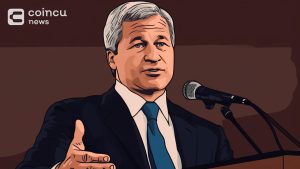Professional EOS trader shortens long despite 27% weekly profit
In theory, EOS has great fundamentals, but derivatives traders have different pricing sentiment.
EOS started a downward trend 53 days ago and is showing no signs of reversal despite its recent weekly gains of up to 27%. As a result, investors are wondering what the once top 5 cryptocurrency will have to reverse in late 2020 following the resignation of Daniel Larimer, CTO of the development company behind EOS.
EOS price table | Source: TradingView
The emergence of competing proof-of-stake (POS) smart contract platforms such as Solana (SOL), Polkadot (DOT) and Avalanche (AVAX) could have put EOS under severe pressure. It’s an undeniable fact that the bullish catalyst came from Block.one, the company responsible for launching the EOS token, which, according to BitcoinTreasaries.net, owns more than 160,000 bitcoins.
EOS may not be the smart contract network of choice right now, but it does have a handful of financial, gaming, stock market, and decentralized social apps running. Transaction costs for users are negligible or are often covered by wallets or apps, making it a great candidate for NFTs and social networks.
Top decentralized EOS applications | Source: DappRadar.com
Having enough capital is a great way to land some great partnerships, and Block.one has raised over $ 300 million from investors including Peter Thiel, Mike Novogratz, and Alan Howard. Developer EOSIO has invested an additional $ 100 million in cash in the Bullish exchange, which completed a seven-week test network on September 15.
According to its website, all transactions and status on the Bullish exchange are validated and stored on EOSIO-based blockchains, allowing for instant verification and integrity maintenance. In addition, the company is expected to add $ 3 billion in assets to the Bullish liquidity pools.
Retailers lose confidence after incident in September
To capture how confident traders are that EOS will hold the recent support of $ 4.50, we analyze the data from the Eternal Futures. It is the preferred tool for retailers as its price tends to follow the regular spot market. Unlike quarterly futures, contracts that are about to expire do not have to manually expire.
In any futures trade, long and short orders are always matched, but their leverage is different. As a result, the exchanges charge a funding rate to the party that needs more leverage, and that fee is paid to the other party.
Neutral markets tend to have funding rates between 0% and 0.03%, or 0.6% per week, suggesting that those who build long startups are the payers.
8-hour fuding rate for EOS Perpetual Futures | Source: Bybt.com
The data shows that there have been no bullish bets since September 19, when the crypto market crashed and EOS fell from $ 5.25 to $ 4.15 in less than two years. However, the recent rally is unlikely to add to the leverage long, which can be explained by the fact that the EOS price is 25% lower than the previous 30-day high of $ 6.4.
Professional traders sold during the recent rally
To understand how whales and arbitrage tables position themselves over this period, let’s analyze the long-short ratios of top traders.
The index is calculated using the consolidated positions of clients, including the spot market, perpetual and quarterly futures. This metric provides a broader view of professional traders’ effective net positions by gathering data from multiple markets.
EOS long-to-short ratio of professional traders on OKEx | Source: Bybt.com
As shown above, the long-to-short ratio of 1.9 on October 3rd still favors long positions, but is the lowest since the price crash on September 19th. The long-to-short ratio of 3 is now slightly below the previous 30-day average of 3.5.
Both retailers and professional traders don’t seem to believe that the launch of the Bullish Exchange will be enough to break the popular downtrend that began in mid-August. In order for EOS to regain investor confidence, it is important to show that their dApps are competitive in the NFT and DeFi arenas.
Join Bitcoin Magazine Telegram to keep track of news and comment on this article: https://t.me/coincunews
Teacher
According to Cointelegraph
Follow the Youtube Channel | Subscribe to telegram channel | Follow the Facebook page
















